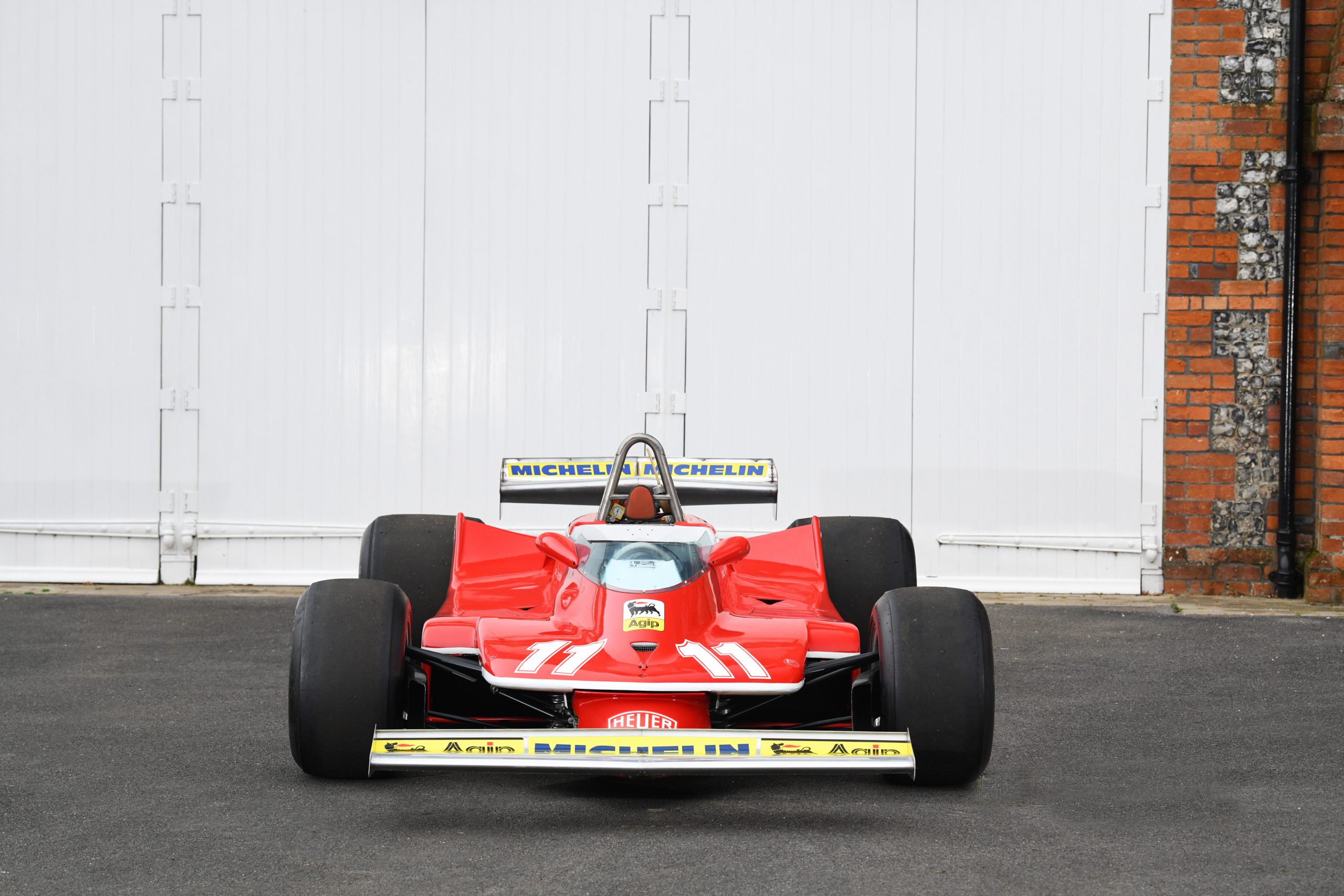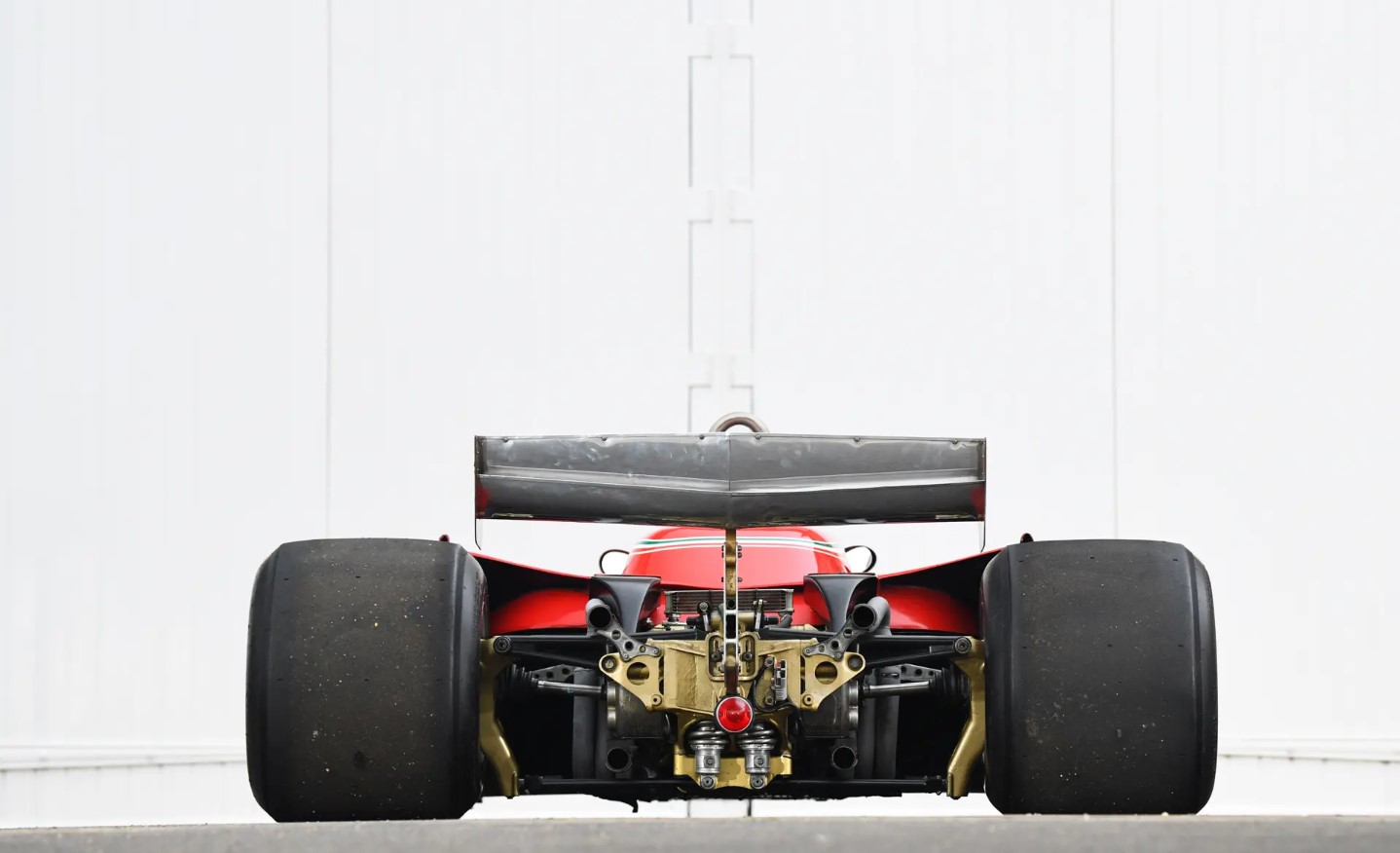Chassis 040 is a Ferrari 312 T4 F1 car. It has lots of first, lasts, and onlys to its credit.
It was Ferrari’s first full “ground effect” car. It also won Scuderia Ferrari’s last World Drivers’ Championship while Enzo was alive. It was the last 12-cylinder Ferrari to win the World Constructors’ Championship. The guy who drove it is the only person from Africa as well as the only Jewish person to win F1’s highest honours. After retiring, he bought Chassis 040 directly from Ferrari, so it’s only had one owner. The ’79 champ is also reportedly the only person to have ever piloted it. He sold it at auction in Monaco on 11 May for an above-estimate €7,655,000 (£6,535,261).

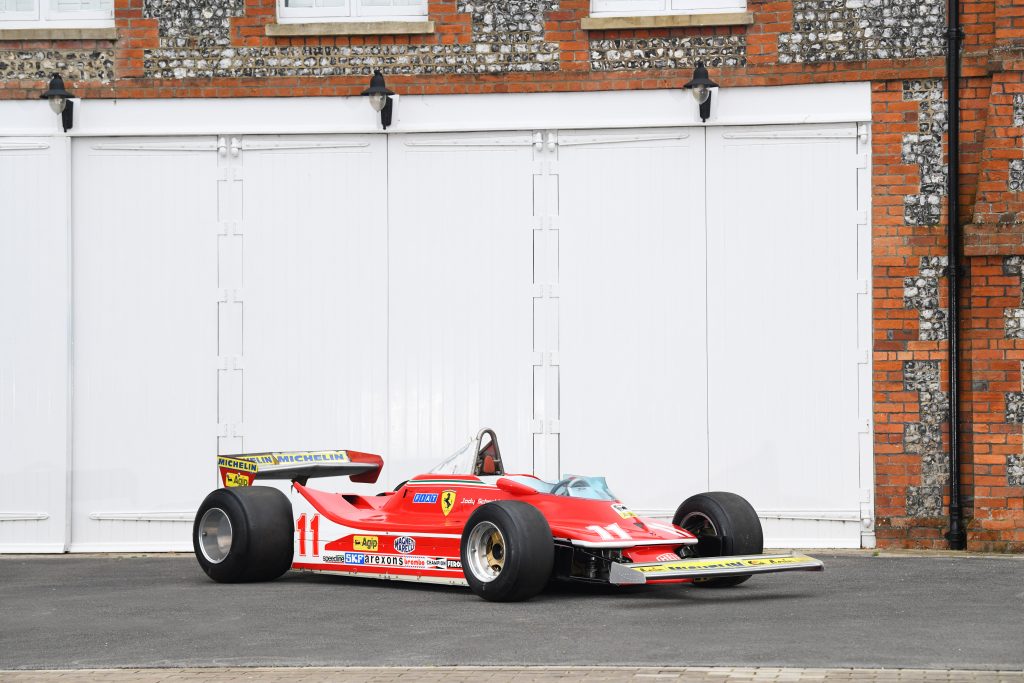
To F1 fans of the Netflix generation, Jody Scheckter might not be a familiar name, but in the 1970s he was a fixture of the sport. Born and raised in South Africa, he moved to Britain in 1970 and his first Grand Prix came in 1972, in a McLaren. He didn’t get a full-time seat until joining Tyrrell in 1974; he won two races that year and finished third in the championship. A disappointing seventh in the standings followed in 1975, although he did win his home Grand Prix in South Africa. In 1976, he drove the wild and crazy P34, a.k.a. the Tyrrell six-wheeler, which featured four small wheels at the front. He gave the P34 its only win, at the Swedish Grand Prix, with teammate Patrick Depailler in another six-wheeler finishing P2.
Scheckter joined the Wolf F1 team in 1977 and won its first ever Grand Prix, then followed up with two wins and multiple podiums to finish second in the championship behind Niki Lauda. Another seventh place in the standings followed for 1978, and in 1979 he joined Ferrari. He would be driving the Scuderia’s latest Grand Prix machine – the 312 T4.
The 312 T (3 for 3.0 litres, 12 for 12 cylinders, and T for the transverse mounting of its gearbox) was already one of the sport’s most successful designs. Designed by Mauro Forghieri, it would go on to rack up 27 wins, three Drivers’ Championships and four Constructors’ Championships from 1975 to ’80.
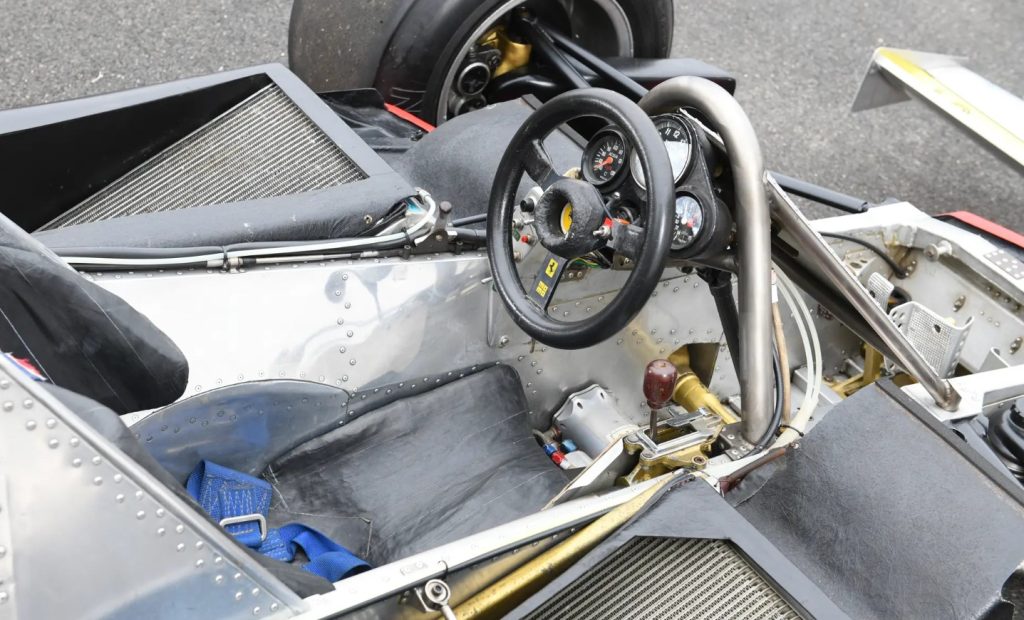
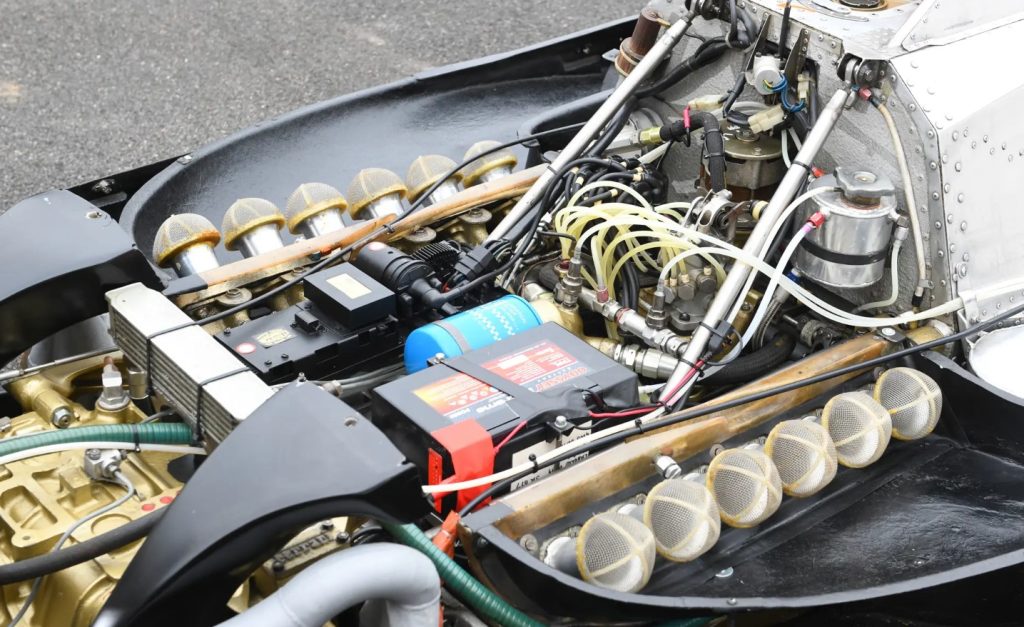
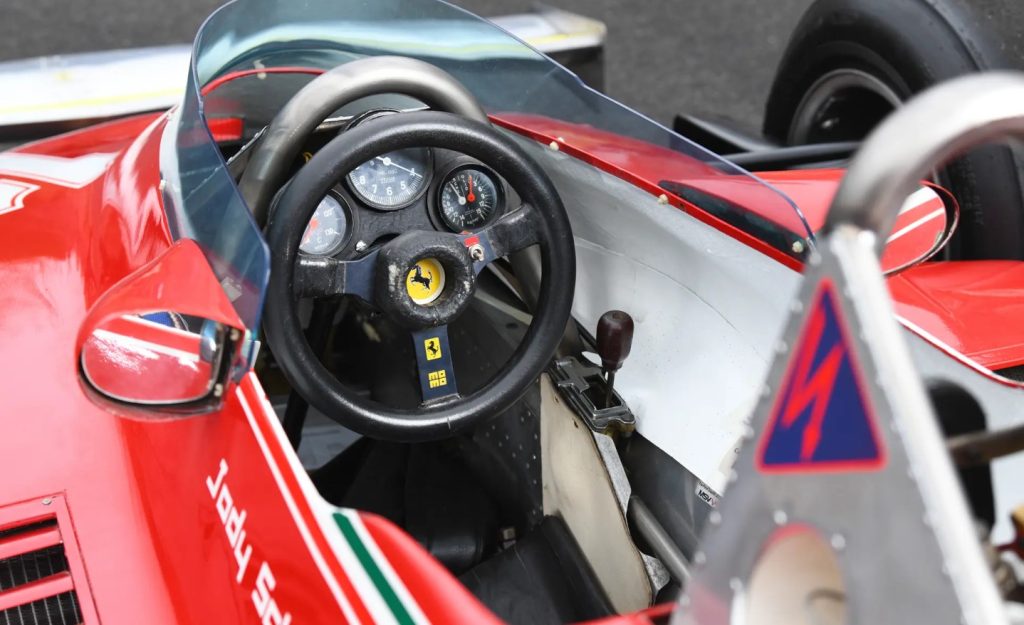
The T4 version, however, was the first of the 312s to fully utilise ground-effect aerodynamics. To put it briefly, ground effect happens when air directed underneath the car flows in such a way to lower the air pressure in the area between the car and the road, effectively sucking it toward the ground to increase downforce. Lotus had been playing with ground effect in 1977, and then perfected it in the 1978 season, which it dominated. So, all the other teams had to catch up with ground effect cars of their own. Ferrari’s main challenge with ground effect was ironically not with its chassis but with its engine. The 12-cylinder unit was both powerful and reliable, and its cylinders were horizontally opposed, which made for a low centre of gravity. But its width so low down got in the way of the venturi tunnels that travel underneath the car to make ground effect possible, an issue not faced by the Cosworth DFV V8s powering the majority of Ferrari’s competitors.
Regardless, the power and reliability of the 312 T4, introduced at the third race of the ’79 season, kept it at the front. Scheckter’s teammate Gilles Villeneuve won the season’s third and fourth Grands Prix, and for round six in Belgium, Scheckter was allocated 312 T4 chassis 040. He won the Belgian GP, then led the Monaco Grand Prix from start to finish. He finished second at the Dutch Grand Prix, then led Villeneuve in a Ferrari 1-2 finish at Monza in front of the Italian team’s home crowd. With that win, Scheckter clinched the Drivers’ Championship, and Villeneuve’s second place guaranteed Ferrari’s Constructors’ Championship title. Although the red cars won Constructors’ titles again in 1982 and 1983, no Ferrari driver would win the Drivers’ title for another 20 years.
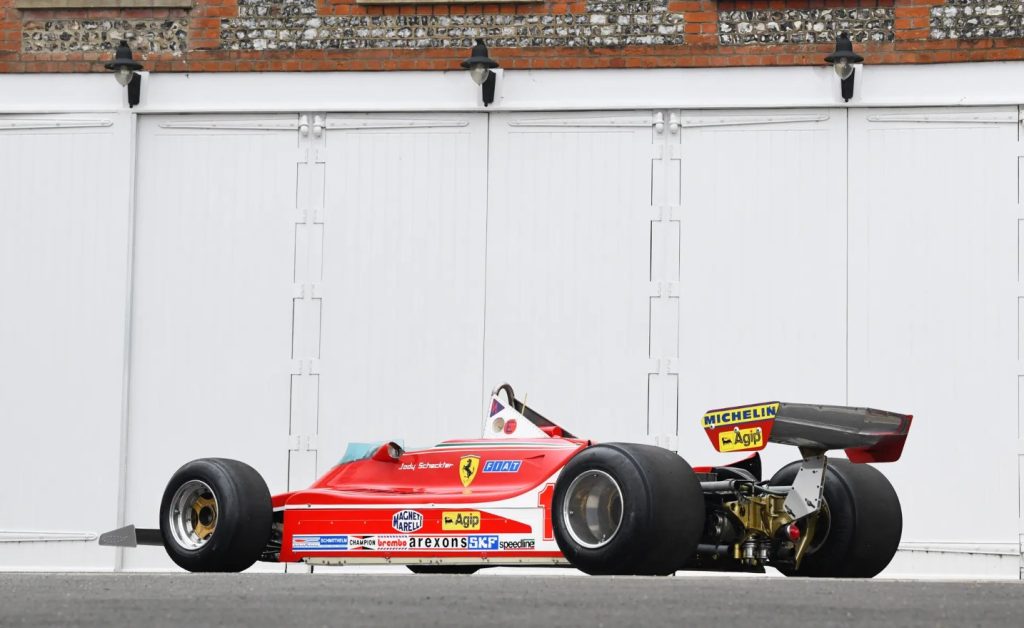
The ’79 win proved the high point of Scheckter’s career. The 312 T5 Ferrari brought out for 1980 was a dud. Scheckter failed to finish four races. When he did finish, he never managed better than fifth. After 1980, he retired from racing. Ferrari, meanwhile, ditched its 12-cylinder for 1981, entering F1’s turbo era with the all-new 1.5-litre, six-cylinder 126C.
In 1982, though, chassis 040 was still in Ferrari’s ownership. Scheckter bought it and has kept it ever since. Since his racing days, he also accumulated an impressive race car collection, most of them open-wheel formula cars that he either raced during his career or are cars of a similar type, including a six-wheeled Tyrrell P34. The Ferrari, though, was the king of the 12-car collection that Scheckter sold at this this year’s RM Sotheby’s Monaco auction. Held at the principality’s glitzy Grimaldi Forum and in conjunction with the Grand Prix de Monaco Historique, the sale featured such racing greats as a Porsche 917, an Audi Sport Quattro and a Lancia Delta S4. Scheckter’s 312 T4 was the star, though, shooting past its €5.25–€6.5M estimate and selling for more than any car there. While neither a record price for a Formula 1 car nor for a Formula 1 Ferrari (a handful of ex-Schumacher cars have sold for more), it’s noticeably more than Niki Lauda’s 1975 title-winning 312 T, which sold for £4.9M back in 2019.
Despite Lauda being a much bigger name in the halls of F1, and despite the similarity in car and era, Scheckter’s 312 brought more for a few reasons. First, top-tier historic F1 cars in general have gotten more expensive over the past five years. The Lauda car also passed through several owners, and since its glory days has been restored. Scheckter’s car, on the other hand, is completely original down to the seatbelts, and according to RM Sotheby’s nobody has ever even driven it other than the world champ who made it famous. Few F1 cars, especially from that era, tick all those boxes, and it’s not a combination you can repeat or replicate no matter how deep your pockets. This result is yet another instance of the best examples of the best cars bringing big money, no matter what’s happening in the wider collector car market.
